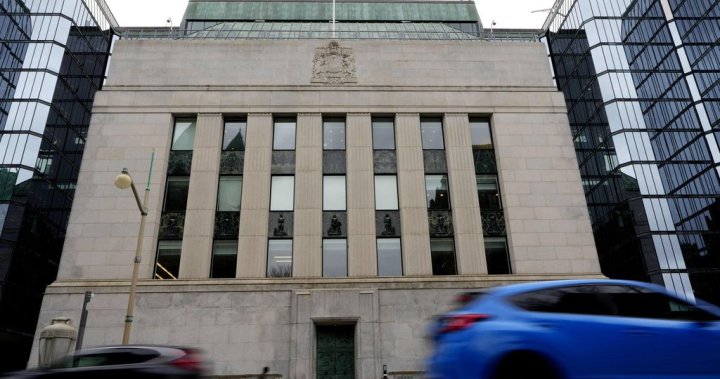Earlier this month, the Bank of Canada opted to leave borrowing costs unchanged for the second straight meeting, and new insight into that decision shows that the unpredictable nature of the current trade war is making these decisions more challenging.
On Tuesday, Canada’s central bank released its summary of deliberations from the meetings that led to its decision on June 4, with the benchmark, or overnight interest rate, kept at 2.75 per cent.
This is the floor rate on which private banks and other lenders base their borrowing rates, including for mortgages and other loans.
For several months prior to the June and April interest rate announcements, many economists and financial experts were widely expecting the Bank of Canada to bring its key rate down further as inflation cooled to its target of between two and three per cent.
However, U.S. President Donald Trump’s trade war sparked by his tariff policies threw a bit of a wrench into things.
“US tariffs had increased substantially since the start of the year, U.S. trade policy remained unpredictable, and uncertainty was high,” the Bank of Canada said in its statement.
“Members (of the Bank of Canada) found it useful to distinguish between two layers of uncertainty: uncertainty about the path for U.S. trade policy and uncertainty about the impacts of tariffs.”
For now, the central bank deliberations suggest that what happens next remains unclear.
“The trade war between the United States and China had cooled off—tariff rates had been lowered substantially but not removed—and the US administration was negotiating trade deals with many countries,” the statement said.

Although Trump has shown some flexibility on tariffs, he has also been just as quick to double down on them, as seen with aluminum and steel tariffs being increased on Canadian products from 25 to 50 per cent — a move Prime Minister Mark Carney called “illegal.”
Given the unpredictable nature of Trump’s decisions during the trade war, the Bank of Canada’s members are now shifting their focus.

Get breaking National news
For news impacting Canada and around the world, sign up for breaking news alerts delivered directly to you when they happen.
“Governing Council members agreed to reiterate in their communications that they would proceed carefully by being less forward looking than usual, with particular attention to the risks,” the statement said.
Economists and other experts have forecast that tariffs will ultimately lead to higher prices, which would put upward pressure on inflation — something the Bank of Canada and other central banks are looking to stabilize.
The latest report on consumer price pressures, the Consumer Price Index for April from Statistics Canada, showed that although the headline reading was a 1.7 per cent increase compared with April of 2024, that was largely due to the removal of the consumer carbon price in the month.
The Bank of Canada said it believes future inflation and other economic reports will further reflect the impacts of Trump’s tariffs on the Canadian economy, including how much further prices could rise.
“Surveys continued to suggest consumers expect prices to rise because of tariffs,” the summary of deliberations said. “Businesses also anticipated an increase … many reported that they would be passing on these extra costs to their customers in the form of higher prices.”

The latest GDP report for March, and the first quarter of the year, showed the economy did fairly well considering the worries that tariffs were bringing to so many businesses at the start of the year.
“Members were encouraged by the strength in business investment growth in the first quarter, but they acknowledged that it was likely temporary … perhaps indicating that businesses had advanced purchases before costs increased from tariffs,” the statement said.
This means businesses may have stockpiled goods at the rates set before tariffs led to price increases, but once those stockpiles run out and new orders have to be placed, the next few rounds of economic data may show a drop in GDP.
From here, it may be up to the federal government to change that outcome, according to the Bank of Canada.
“An expected increase in government spending following a decline in the first quarter could partially offset the negative contributions to growth from exports,” the statement said.
If spending measures by the government help spur new investment and thus economic growth in Canada, there could be a scenario where prices come down as the country is able to dodge tariffs, and interest rates could even come down again.
“Members agreed there could be a need for a further reduction in the policy interest rate if the effects of U.S. tariffs and uncertainty continued to spread through the economy and cost pressures on inflation were contained,” the statement said.
The next interest rate announcement from the Bank of Canada comes on July 30.
© 2025 Global News, a division of Corus Entertainment Inc.
Bank of Canada says recent rate hold was due to ‘unpredictable’ economy





